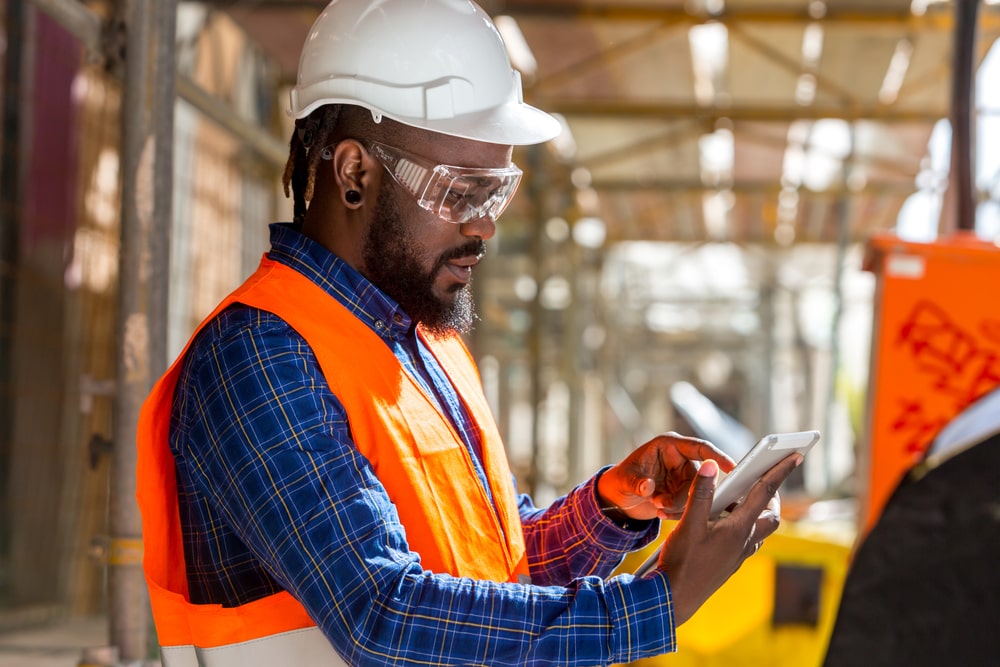
Share this article
Share this article

The development of new innovations has resulted in the rise of construction-specific technology in recent years. According to entities like the Construction Industry Institute, construction-specific technology consists of innovative tools, machinery, and software which enables the improvement of field construction methods.
Today, construction companies are facing key challenges such as a lack of effective communication and equipment breakdowns which lead to project delays. To address these challenges, they are turning towards smart devices, mobile and cloud applications, and software solutions. These tools have the capacity to improve accuracy, enhance safety, and minimise costs while reducing expert displacements and excess CO2 emissions.
The evolution of the construction industry’s landscape is revolving around increased automation as well as technology that can improve the health and safety and productivity of workers. In recent years, mobile applications for tablets and smartphones have been paving the way for the integration of more construction-specific technology on worksites. Important innovations such as Building Information Modelling (BIM), robots and drones, wearables, and 3-D printing have similarly been adapted to the specific needs of construction. These existing trends will continue to be relevant to the industry as new developments emerge.
To amplify the sector’s technological transition, key actors have developed specialised innovation clusters. VINCI Group’s foresight and innovation platform LEONARD, Impulse Partners‘ Construction and Building Accelerator, and the innovation division of Bouygues Construction are working in conjunction with start-ups developing technology that can properly address the industry’s needs.
This increasing adoption of technology is linked to the demand for the faster completion of construction projects while maintaining safety protocols. Following the emergence of new technologies, businesses have experienced clear benefits including enhanced collaboration between workers on construction sites, as well as a reduction of time and money spent by contractors. The results are clear, for instance, with 85% of construction stakeholders stating that BIM technology improves design insight which can result in a more accurate and streamlined building process.
Construction-specific technology and more specifically video-assistance solutions can efficiently address the challenges of equipment breakdowns. Construction companies operate dozens of different complex and expensive machines at one time and at each site. Their availability is essential to maintaining production as breakdowns can easily impact or delay the overall projects.
With such large and complex machinery, drone technology could provide the unique perspective necessary to recognise and resolve complex issues on construction sites with accuracy. Alternatively, experts may need a more close-up view of a specific tool or part of a project. For example, if a crane malfunctions, on-site operators may need assistance from a crane expertise center. These experts need to be able to understand and resolve the technically-complex issue so that the operators can continue to move heavy construction materials. However, expert travel to the construction site is costly and travel time increases machine downtime, thereby delaying production.
Integrating a video-assistance solution at this stage of operations would allow specialised crane experts to remotely diagnose and guide the operators towards a problem resolution without traveling on-site. Thanks to remote assistance technology, diagnoses are much simpler to achieve. By including various collaboration functionalities in real-time, such as sending documents, screen sharing, and taking snapshots and annotating them live, technical experts can help on-site operators determine the source of problems more quickly and precisely.

While real-time communication helps construction sites get back on their production schedules and leads to longer lifespans for expensive equipment, it also improves overall worksite communication. According to a study by FMI Corporation and PlanGrid, about 14 hours per week are wasted on non-optimal activities at construction sites. This includes time spent on unnecessary data or information retrieval, resolving conflicts, and finding and fixing mistakes.
Suboptimal, interpersonal communication can be improved through live, visual communications between teams so as to avoid misunderstandings. The increasing prevalence of tablets and smartphones in the field allows for greater flexibility in communications, even when technical teams are far from the worksite. Mobile and cloud applications, drones, or even robots can provide accurate and precise communications to these remote sites. In practice this means that contractors and project managers can monitor a project’s progress from their offices without having to travel. Reducing displacements is simultaneously time-efficient, cost-effective, and safer as it reduces the number of workers present at hazardous construction sites where there is heavy machinery and materials.
Technical challenges in the construction industry are being addressed through the use of connected objects, drones, BIM, and innovative solutions such as video assistance. Gaining the proper visibility on complex construction sites is essential to ensuring accuracy and safety when resolving issues with heavy machinery. Companies have found that construction-specific technology significantly helps on-site operators reduce labor costs and keep projects on schedule. Due to the clear benefits of such innovations, major actors in the industry continue to support initiatives to develop new sector-based solutions.